Grapes are often called a berry of life. Well, the well-deserved title of ancient culture of humanity is quite justified. Sweet and delicious berries are rich in vitamins and useful substances, and variety of varieties allows you to find each favorite tint of taste and fragrance.
Grapes, description of the plant
- The genus of a fruit plant, widely known called "grapes", refers to the vintage family. The most popular appearance of this kind is "cultural grapes", the fruits of which are highly appreciated in winemaking and are a valuable food product.
- Currently, culture is distributed in almost all countries of the world with a moderate and subtropical climate.
- The plant is a long-term shrub Lian, whose shoots are called - vine. In the southern warmth climate, liana grapes can reach a length of up to 40 m, in medium and moderate latitudes - no more than 3-4 meters. Adult vine - thickened overweight, loose bark, stem. Young shoots, thin and flexible, fruit by abundance of grape clans. The shoots cling to the support with the help of the mustache, whining, thus standing next to a tree or a specially installed grape holder.
- Leaves of grape 3 or 5 blade, solid, with cushion.
- Perennial flowers are small and non-zerosy, assembled in the inflorescence of a pan or complex brush. The flowering period falls on May-June, and ripen the berries only by the end of the summer - in the fall.
- Sweet and healthy fruits of grapes are represented by berries of different sizes, colors and shapes collected in a cluster. Berries can be both with seeds and without them. And the color gamut of fruits varies in a wide range: from greenish-yellow and pink to dark red and purple shades. The taste quality of berries differ depending on the grape variety.
- The underground part of the shrub consists of a powerful root system and thickening at its base - head moving into overhead shoots, so-called. Sleeves.
- Grapes are considered a long-liver among cultural representatives of flora and under favorable conditions can live up to 100-150 years.
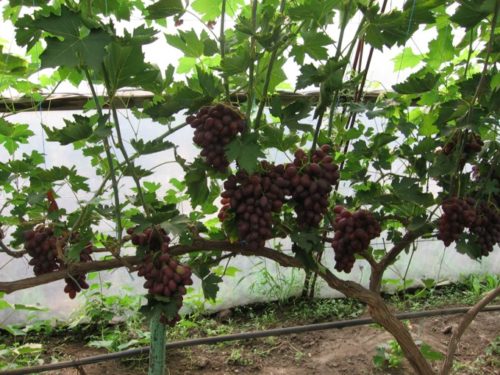
Types and grapes
The breeders are derived and constantly updated the huge varietal base of grapes. Today, in the world there are more than 8,000 varieties of this culture.
Its varieties are classified by different signs:
- in terms of maturation: early, medium, late and intermediate (for example, early medium);
- for purpose: dining rooms (in food), universal (in food and for processing), technical (for juices and wine).
There is also a classification of grape varieties for taste, which provides for the presence of 4 groups:
- ordinary taste (combined sweetness and acid in different proportions);
- muscade taste (has a pronounced nutmeg);
- isable taste (a typical representative of the group - the grade "Isabella", has taste, reminiscent of strawberries or pineapple);
- parentine taste (reminds the taste of gravel, has a slightly herby shade).
In science, studying the varieties of grapes, there is also a division of varieties for groups, according to the area of \u200b\u200btheir origin:
- eurasian (large berries with high tastes);
- american (frost and drought resistant, small berries);
- amur (high frost resistance, short vegetation period).
As visual examples, consider the most popular varieties of grapes:
- Cabernet-Sauvignon- Technical high-yielding grade with an elevated taste. It is distinguished by frost resistance and immunity to diseases.
- Isabel - Universal, early high-yielding grape variety. Berries are dark blue, sweet, with strawberry flavor. The variety is influenced by endurance and strongerness.
- Nina -table unpretentious grade, with average maturation. It is characterized by large juicy berries, with a pleasant, slightly tart, taste.
- Arcadia - Early, thermal-loving grape variety. It is characterized by major clusters with berries slightly acidic, nutmeg taste.
- Cardinal - Representative of the American group of cutlery varieties of grapes. Berries - juicy, large, fleshy, purple shade. This is a rather thermal-loving variety, susceptible to diseases and pests.
- Dream / Nadezhda - Central Asian table grape grapes that do not contain seeds. Bright juicy berries possess a pleasant taste and aroma. The variety is not frostable enough.
- Muscat Ottonel- Universal French variety with medium-sized berries and pronounced muscat taste.
This list can be continued long enough, so we will stop in more detail on the methods of reproduction of this valuable culture.
Vintage grapes
Grapes breeding vegetative (parts of the plant) and generative methods (seeds).
Gardening lovers in their practice do not apply a seed method for breeding grapes, since the signs of parental culture are not inherited.
The reproduction of grapes at home is carried out, as a rule, in a vegetative way - stalling, grooves, vaccinations. These activities allow you to fully maintain the desired properties and signs of an adult plant. The ability of grapes to regeneration allows you to painlessly carry out such procedures, after which the shrub quickly heals all wounds and is completely restored.
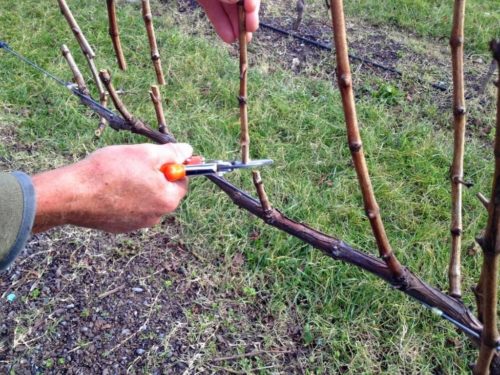
Vintage grapes
This is one of the simplest and most popular method of breeding culture. Consider gradually how to properly prepare cuttings at the autumn time:
- at the end of October, to cut healthy strong weighing shoots, uniformly painted, with a diameter of about 1 cm;
- for cuttings are not suitable damaged, too thin, thyroid or very thick shoots;
- on the cutlets remove all the leaves, mustaches, side shoots;
- full cutting should have at least 4 kidney;
- the upper cut is made at a distance of 2-3 cm over the kidney;
- from the bottom of the cuticle to make a knife slice, 2-3 cm below the kidney;
- all prepared cuttings per day are placed in water;
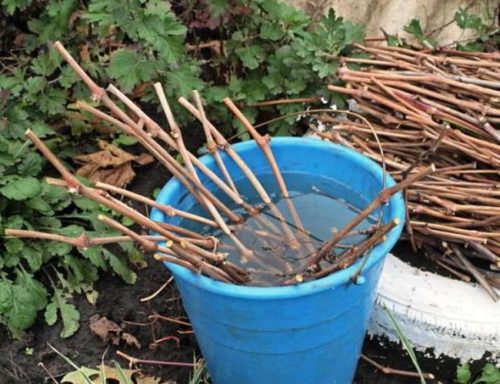
- after that, to handle shoots with a weak solution of copper sulfate and dry;
- the cuttings are lowered into the cellar for storage, pre-wrapped in paper and plastic bag, for winter;
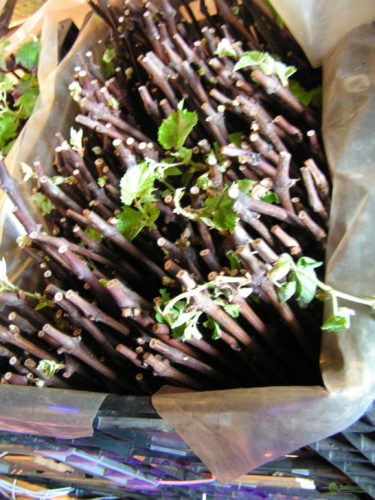
- also practiced the storage of letters laid in wet sand;
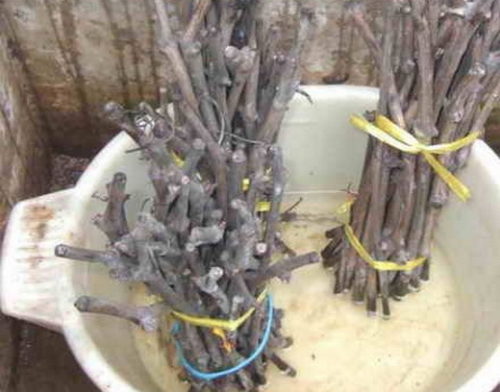
- early spring you need to go through all the cuttings, swing the best (with a crumpled green kidney), intact mold or rodents, shoots;
- cuttings are soaked for 10-15 minutes in a weak solution of manganese, then put in a jar with water;
- after some time, the cuttings update the lower slice, 1-2 cm from the lower kidney;
- in this type of cuttings are ready for planning to individual containers for rooting, after which they can be planted in an open soil in May.
The cuttings can be successfully prepared in the spring. For this:
- in the spring, before the flowering start, cut green cuttings;
- cut shoots to put into water;
- after some time, stretching the cuttings from the water, cut them into parts with 2-3 kidneys and again put into the water;
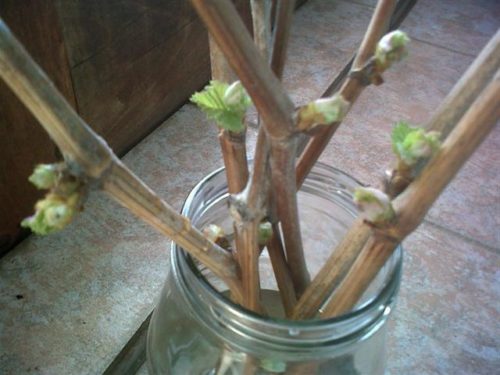
- before boarding, make a skeleton section at the bottom of escape and land in separate containers with loose soil from peat, sawdust and sand;
- in the fall, put germinated cuttings into the cellar to wintering, previously treated by their copper sulfate solution;
- spring live seedlings to land in larger containers, and in the fall in open ground - at a permanent place.
Vintage grape reproduction
- A grafted seedling is a dive (vine of 1-1.5 m) and a lead (cutlets with 1 kidney). Cultural grape varieties are used as a lead, and when choosing a collection, the main thing is the stability of the variety to diseases and low temperatures.
- Cutting the cuttings (with a diameter of about 60 - 80 mm) for the lingerie in the fall, with the presence of at least 3-4 kidneys.
- Winter storage of cuttings is carried out according to the rules described above.
- In the fall, they exempt from unnecessary shoots, leaving only a vine for future vaccinations, and shelted for the winter.
- Push the plant in the spring, before the start of the skeleton or early summer. It is better to choose a cloudy, but a glad day.
- After examining and overloaded the prepared cuttings, you need to upgrade the lower cut and put them on the ¼ in the water, so that the kidneys will be fastened faster.
- After swelling the eyes, the jar with water and sweets put in the refrigerator for 2-3 days for quenching.
- Cranulate the tempered cuttings to the bustle. The acclating of the lead and the flow is carried out by the formation of new cells.
- Tool for cutting when vaccinated must be sharp and sterile.
- A sharp wedge is made at the place of future vaccinations, they make a sharp wedge, suturing a piece above the top kidney of the cutlets and below 4-5 cm. The prepared will be wrapped in a wet fabric and, in the meantime, prepare in diving. On the vine of the flow, they make an incision for 4-5 cm above the kidney, cutting on the same depth as the lead. Then, neatly inserting the Wedge of the Wing in the incision of the groove (follow the kidney to be directed to the opposite sides), the place of vaccinations should be wrapped or an oculating film. From above can be wrapped with further cloth.
Vintage reproduction
- This method is used for breeding grapes, both in autumn and spring.
- In advance, under the bush, they prepare a small groove, a depth of 40-50 cm, in which the low-growing young, but powerful vine is placed. The ditch is better to add humus and chernozem (rich in the nutrient medium), and the slot is cleaned from leaves, stepsins and mustache.
- The lands fall asleep, leaving the top with a few leaves and a point of growth over the surface. Then, the supassed vine is abundantly watered with water.
- The scene of the shock is needed to climb sawdust and constantly moisturize.
- With successful rooting, the autumn will appear young shoots, and after 2-3 years, the separated vine can be safely separated from the uterine shrub.
- The method of reproduction is convenient when updating the old shrub of grapes with young plants, but it fits not all the varieties.
Landing grapes
To assemble a decent harvest of delicious and juicy berries, you need to make not only physical efforts to grow this valuable culture, but also surround the perennial real love and sensitive concern.
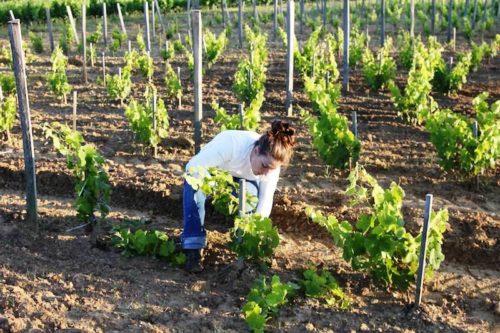
Grapes
- Heat-loving plant, grapes, prefers bright, windless and open aSTKIAlthough some varieties are perfectly fruit and in half. Often, the vineyards are broken from the south or south-west side of the CAD.
- Perennial grows on various soil types: Sand, Suglinka or Limestones. It is enough to make some adjustments - and the soil composition will optimally ensure the development of shrub. So, clay soil needs an additional drainage layer; Sandy - favorably respond to the introduction of organicities (compost, manure, humus); Peatlard - will require the addition of sand. The most undesirable for the grapes of the soil with a high content of salts (salt marshes) or constant moisture stagnation.
- Despite the fact that, grapes are a moisture-loving plant, the constant stagnation of moisture undesiatively affects the development and fruction of culture. This factor must be taken into account when choosing a place to land a perennial shrub.
- The choice of a certain place affects the choice of grape varieties. As far as it is adapted to the necessary climatic conditions, unpretentious and frost-resistant, it will be so successful to its cultivation on the plot.
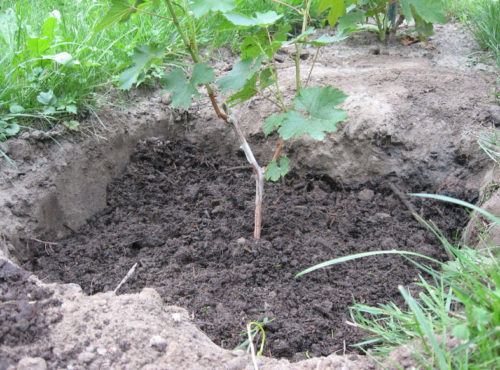
Grape landing technology
- To begin with, it is necessary to prepare a landing jam, about 80 x 80 x 80 cm, depending on the size of the seedling. Many gardeners recommend cooking a pit in 2-3 weeks (and even earlier) so that the soil finally settled and donkey, then the seedling will not fail and will be able to successfully root.
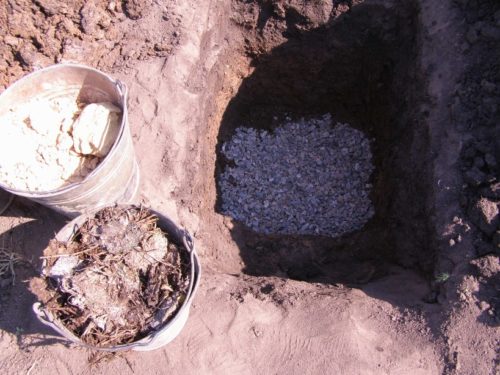
- In the center of the fossa should score the support peg and prepare a drain layer. To do this, you need to fall asleep in the well a small crushed stone or a broken brick at least 10 cm.
- Then, cover the drainage layer of the Earth, about the same thickness as the drainage. Soil is good to shed water.
- To the moistened soil optimally add feeding: manure, humid, superphosphate, wood ash or potassium salt.
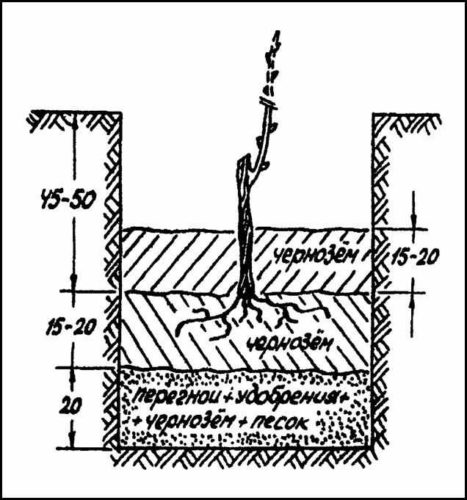
- From above, in the hole, again glue the soil so that 1/3 of the well was filled, and shed water.
- In the center, near the crawl, form the soil hollyk, on which gently straighten the roots of the grape seedling. Sabell seedlings pre-tied to the support.
- Holding the seedling, fall asleep the soil, thoroughly compact it. When landing, ensure that the point of discrepancies of shoots on a sapling remains at the ground level.
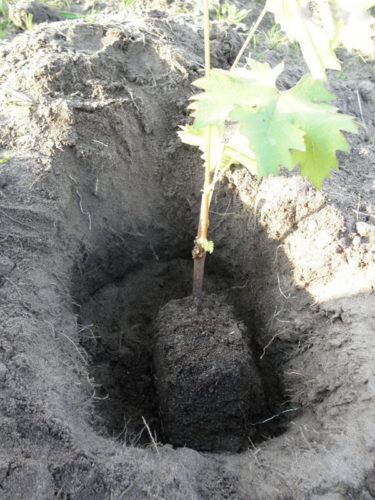
- In order to prevent drying and weathering, the planted seedling plunges on a height of about 20 cm. This rule is appropriate for arid, southern regions.
- If several seedlings are planted, the required interval is 1.5 or 2 m. In the case of landing near the fence or wall - it is necessary to retreat at least 0.5 m.
- There are several methods for planting grapes, depending on the type of soil. On sandstones, grapes are planted in the trenches, and on clay types of soil - on the ridge. In any case, the natural landing of grapes is unacceptable, it is better to plan the placement of many years of culture in advance on the site, which will greatly facilitate the subsequent care for it.
- If the seedlings are planted in the fall, they need to be emphasized for the winter, to cover the cauldron, sprinkle with sawdust.
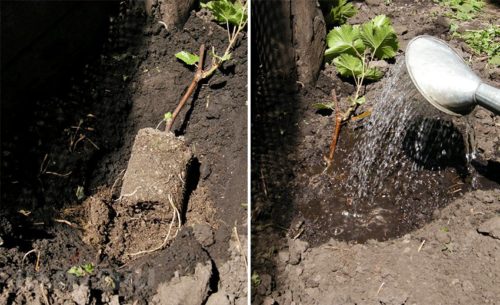
Landing time grapes
- The planting of grapes is more often carried out in the spring, during the period when the snow is completely coming down and the earth is heated by the spring rays of the sun before the start of summer, until it comes too dry and hot period. Moreover, earlier (in April, May) put on withdrawal seedlings, and later (in May, June) - Green cuttings.
- Lined in the fall of grape seedlings are also well carred and winter. Landing is carried out in October, November, to the first frosts. For the winter, seedlings are covered in order to avoid frozen.
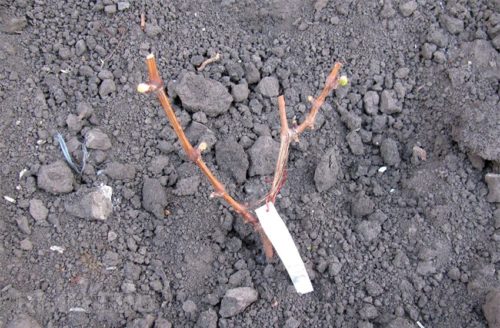
Buying seedlings grapes
- Saplings can be prepared both independently and buy finished seating.
- You can buy grape saplings in any specialized garden shop, in online stores, in wine forums, in fairs and exhibitions of famous nurseries.
- When buying should be paid to the appearance of the seedling: it should not be sluggish, snapped (the kidneys should not disappear at easy pressing), if there are leaves, their color should be bright green.
- Before boarding the open soil, the seedlings need to be properly prepared: to withstand the roots of letters about 1-2 days in the water, the annual Escape to cut, leaving 3-4 kidneys, and the roots are slightly cut to stimulate their growth.
- When buying grafted seedlings, they are planted almost in a horizontal position, providing better aging of the vine.
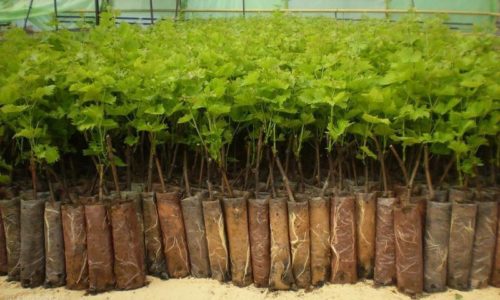
Caring for grapes
The cultivation of grapes requires certain agrotechnical knowledge not only when planting culture, but also in the process of care of the shrub.
Watering grapes
Grapes loves moisture, a beneficial response to a systematic and abundant watering. But it is also not worth overdoing: culture does not like water stagnation, wet foliage and constantly wet soil, besides, under such conditions, the risk of diseases increases.
- A young growing plant requires more moisture in frequency and abundance than an adult formed bush.
- Watering is carried out under the root, the grinding procedure is contraindicated, as it can provoke the development of various diseases.
- In the spring, the first watering after winter colds is carried out as the soil drying.
- The next watering is carried out during the end of the flowering and the tie of fruits. But 1-2 weeks before flowering, the grapes do not need to not cause the color of the color and the delay in the formation of the barriers.
- The last watering falls on late autumn, when preparing grapes to wintering.
- Experienced grape gardeners are used for watering young plants of grapes inserted, when landing, pipes. For watering the entire vineyard make special drainage channels, the pipes of which are placed in a bent. This method avoids the stagnation of moisture, while fully ensuring the grapes of the necessary norm of water.
Border grapes
Considering that the curving growing vine of grapes requires garter to the support, you need to know the basic rules and methods of garter. This technological method allows the formation of a properly bush of grapes and facilitate the care of grapes.
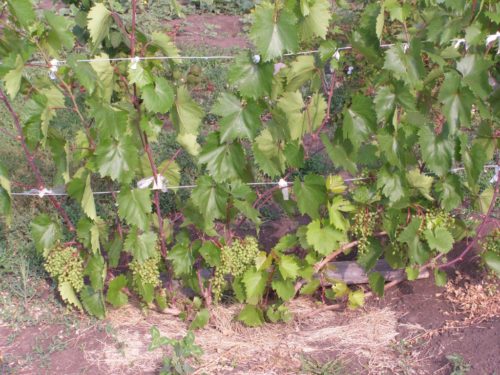
- If the grape bush is formed by two, directed in opposite sides, escapes, to the grinding tapping on the branches, vines. To the lower wire is tied up 2-3 vines, gradually lifting up and tapping the rest. Thus, on 2 m, the tallyers can be tied up to 20 grape shoots.
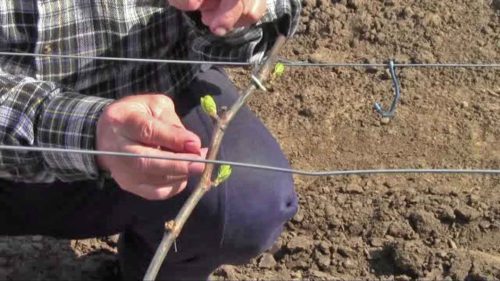
- When in the end of the spring, extra long shoots will germinate from the bitch, they are laid horizontally to the wires of the trellis so that all existing vines are conveniently laid in the winter.
- Bending shoots should be carefully, for the tips, so as not to break the escape. The bending of the vine must be smooth, so as not to overlap the flow of nutrients to the kidneys of grapes.
- When taking the grapes, the water inquired was used in water.
- Grapes has the property of vertical polarity. Therefore, a horizontal garter (with a slight bias) is the most popular way at which all annual shoots grow approximately equally. Some gardeners use a vertical garter, then there is an active growth of shoots only from the upper eyes, while the lower practically does not develop.
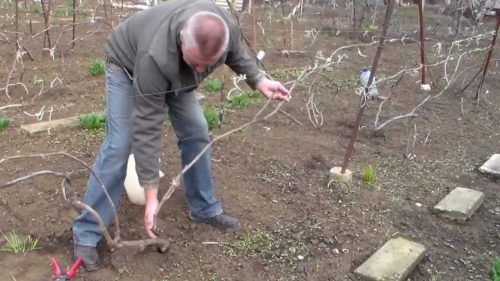
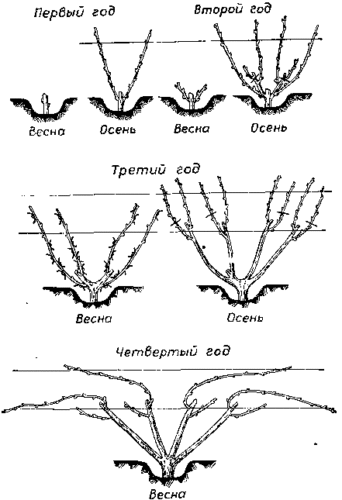
Paging grapes
The pieceing technique is used to faster the bush and an increase in the yield of grapes.
- The essence of the reception is to discharge / remove the top of the green escape (above the 10th knot), artificially by sending all nutrients not for the development of escape to the length, but for a qualitatively better formation of inflorescences. Paging make a few days before the start of flowering.
- Also, pouring certain shoots in the spring, it is possible to get the desired branching of step-down shoots. Thus, you can form a bush of grapes.
Feeding and making fertilizers
If when planting the plant, appropriate fertilizers were made, the first 3-4 years, the grapes are perfectly done without additional feeding.
- In order to further stimulate the growth and fruiting of perennials, organic or mineral fertilizers can be made.
- From the organicity most often use manure, peat, compost, bird litter.
- From mineral complexes, ammonia nitrate, urea, superphosphates, potash salt and others are suitable.
- Spring feeding is carried out with dry fertilizers in the rolling grooves, sprinkling a small layer of soil (for example, a mixture of superphosphate, potash and nitrogen fertilizer for 30-40 g of each on one bush).
- The next feeding is carried out before the flowering period. A solution of any organic fertilizer is prepared (for example, a bucket of manure is diluted 5 times with water and defend a week - one and a half) and small doses of mineral feeding (20 g of superphosphate and a potash salt on 1 bucket of dilute organics). One bush of grapes consumes an average of 1 bucket of such a solution.
- The last feeding is carried out during the ripening period of berries. Use phosphoric and potash fertilizers, at the rate of 2: 1.
- Nitrogen-containing fertilizers are used only in the first half of summer so that they do not delay the subsequent ripening of fruits.
- The feeders are entered in normalized quantities, according to the instructions, not exceeding the allowable volumes. There are root and extractive feeding.
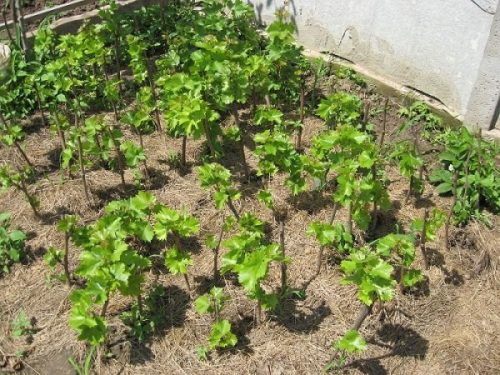
Grape shelter for winter
Features of the varieties and climatic conditions for growing grapes affect the need for this perennial in winter shelter bushes.
- Most grape varieties are still subject to additional shelter for the winter so that with severe frosts it is not damaged roots, shoots or buds of the plant.
- Gardeners are recommended to cover young seedlings of grapes, at least the first 2-3 years.
- Shelter the grapes on the eve of winter cold, after removing shoots from the garter and undermining the pagan or boards on the soil as a substrate.
- The branches are wrapped with a layer of special material: Spanbonda or Loutrasil, and from above are covered with a film or tool. To ventilate, it is necessary to leave small gaps from the shelter ends.
- An early spring should not be in a hurry to remove the shelter, it is better to wait, when stable, without frosts, weather.
Pruning grapes
Pruning helps to increase yield and proper formation of shrubs.

- Pruning grapes is carried out in the fall. Spring trimming is somewhat trauma for shrub when so-called. "Tears" can pour out eyes, leading them to zaking and, of course, reduce yield. Trimming in the spring time is justified only by sanitary purposes to remove damaged or sick shoots. Summer trim includes piping, steaming, cropping leaves, closing the borders from the sun.
- If the grade is observed, cut it directly before shelter for the winter, if not, after focusing.
- Pruning grape seedlings is not complicated and implies removal of unnecessary shoots, after which the bush remains from 3 to 8 sleeves. Moreover, in the first year of life, a sapling, usually leave only one escape, removing extra steps.

- Pruning adult plants is somewhat more complicated and multifaceted. First, young shoots are removed from the bottom of the perennial sleeves, then remove side steps and the tops on young shoots of supreme order sleeves. On the lower shoots, cut the feeding of substitution (at an altitude of 3-4 eyes), to give, in this way, the fruit arrow. After proper trimming, there are perennial vertical strains with horizontal sleeves, which in the new season will give rise to a young vine.
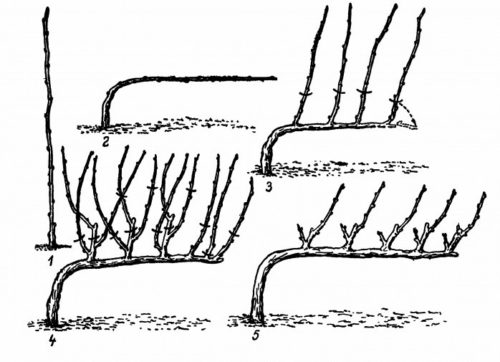
Diseases and pests of grapes
The grapes, unfortunately, are subject to many diseases. Therefore, growing this culture in her garden, it is necessary to know not only measures to combat countless "misfortunes", but also methods of preventing diseases.
The most often grapes amazed by the following diseases:
- Anthracnose– A fungus manifested by brown spots on all overhead parts of grapes. On the site of the stains that appeared, the fabric gradually devies, the inflorescences and the leaves dry out, ulcers are formed on the shoots, on berries - spots. The affected plant is treated with fungicides: burgundy mixture, chorus, Ridomil, Anthrakol, etc.
- Oidiumor pulse dew, caused by a fungus, covering a plant with a scoop color. With this disease, the leaves are twisted, the inflorescences dry out, and the berries are silent and bursting. For the treatment of grapes, treatment with preparations, such as Topaz, Horus, Tanos. As prophylaxis, it is important to cut the shrub from foliage, delete extra shoots, tapping the vine.
- Mildewor false torment dew - common fungal disease. Signs of the disease will be oily stains on the surface of the leaves, and the bottom is a characteristic torment. Then the affected areas die, the leaves are falling, the flowers are creepy. In the fight against the disease, the drugs of Anthrakola will help, striking, ryidomyl or familiar burglar liquid.
- Gray Gnillprogresses in high dampness. Escapes, kidneys and bunches are covered with a dense casczyce. For treatment, the plant is treated with fungicides, as in the case of Mildu and Oidium infection.
- Black spottyhe leads to the elimination of shoots, the yellowing of the leaves and the death of the plant. At the vineyard, the rotational sections of the vegetative bodies of the shrub are visually determined. Mycelium fungus deep penetrates the tissue of the plant and often, the processing of fungicides does not bring results. To remove the disputes, the fungus, grapes (in autumn, after trimming) spray with drugs with copper content (burglar mixture, copper chlorocation, chorus, kidnoksat). Unfortunately, all drying shoots and sleeves are removed. Early spring, repeat processing.
From the pests of grapes, the most common and dangerous are:
- Grape Tlaor Filloxer, affects the leaf or root part of the plant. The most dangerous damage to the roots, leading to the death of the entire plant. The insect is quite difficult to destroy, and uses such drugs such as gold, confident or accomplishing.
- Caterpillar Listaerk- Voracious parasite, massively affecting leaves, inflorescences and grape berries. It is already necessary to start a struggle with this pest, removing the shelter and treating the bushes by Nitrophen. Then, when the active years begin with butterflies, insecticide is carried out (for example, carbofosomes), repeating the event in another two weeks. When the caterpillar grapes appears on the shrub, it is necessary to spray a plant with benzophosphate or carbofos.
- Tsicada -fast expression hazardous pests, carriers of viral and mycoplasma diseases. At the very first signs of the appearance of a cycade on grapes, it is necessary to apply an actary solution for processing.
In addition to these pests, ticks, grapes, grape pads, wicker grape, hedge, whils and other pests are rendered significant harm.
Use of grapes
The fruits of grapes are taken in food not only in the fresh form, they make raisins, juice, wine, jam, compotes, alcoholic beverages, and even vinegar. Grape seed oil is widely used in cosmetics, and grape leaves are used to prepare dollars.
Grape berries are rich in useful substances, vitamins, trace elements and enzymes. The valuable product has a positive effect on the operation of the bone marrow, stimulates the activity of the hematopoietic system, normalizes the metabolism. Antioxidants (tannin, anthocian, rosalol) contained in the fruits of grapes purify the body from toxic influences such as external and internal factors. For the same reason, the plant ecstact is widely used in cosmetology.
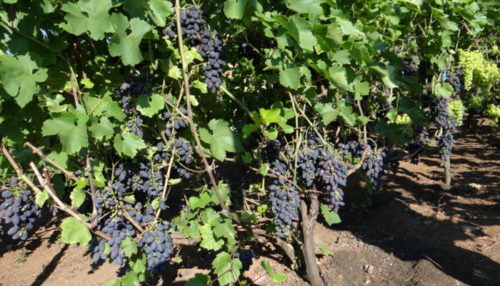
Today, grapes are also in demand as many thousand years ago. Well, everyone will be able to grow this culture. Main: Apply in practice all the advice and recommendations presented in the article.
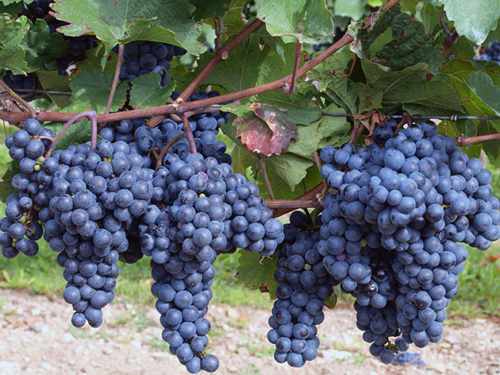

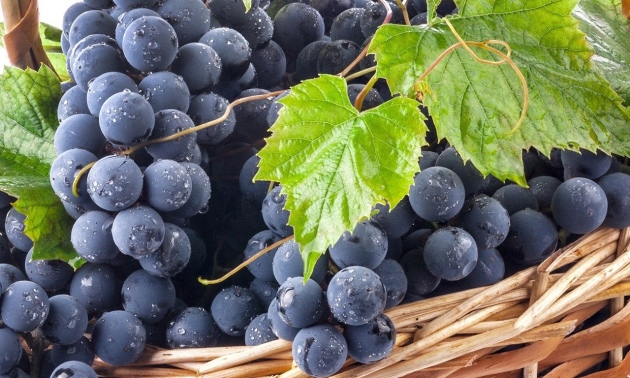
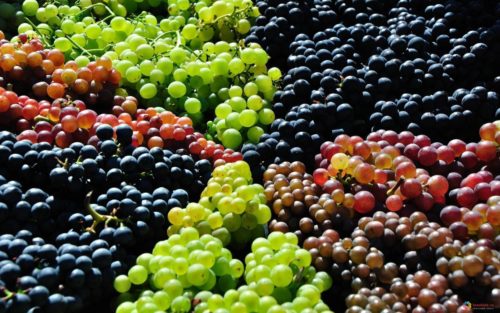
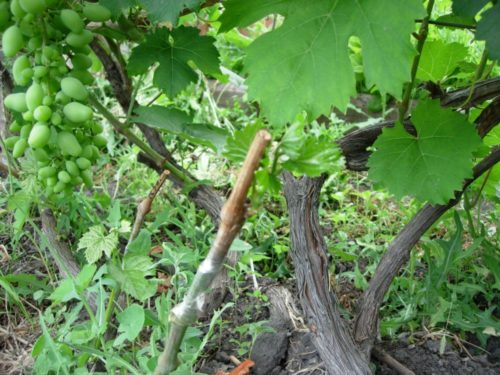

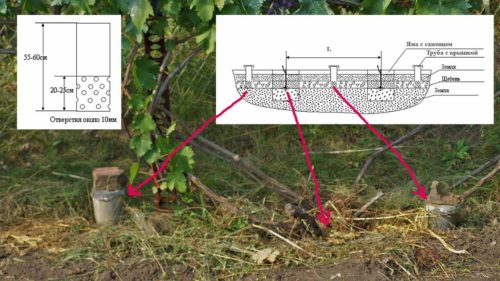
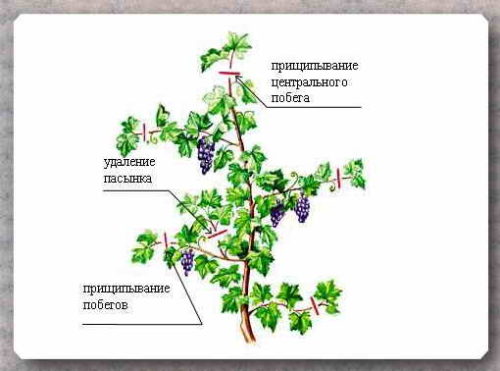
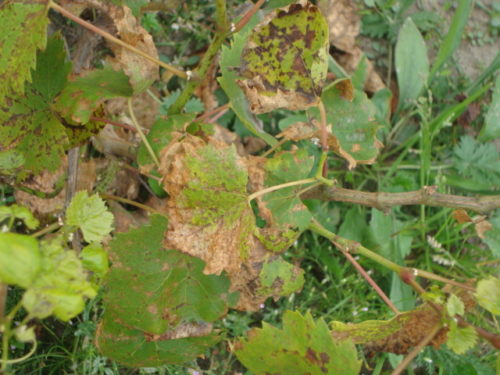
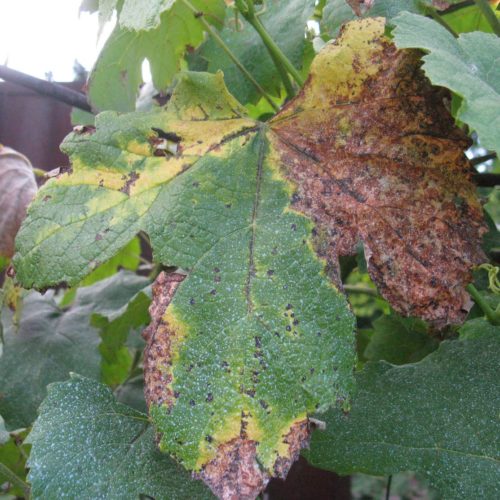
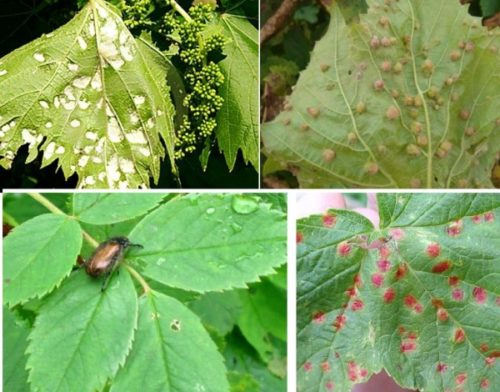

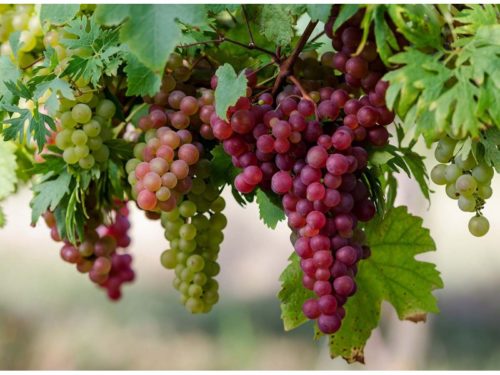
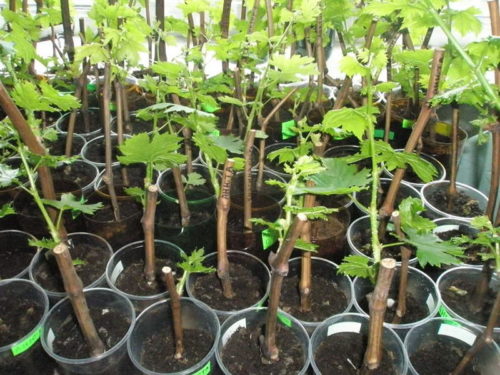
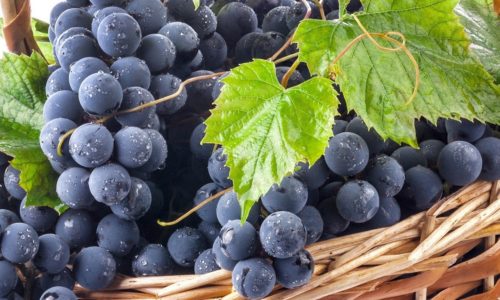
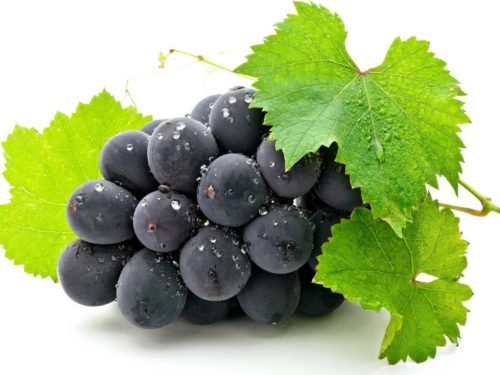
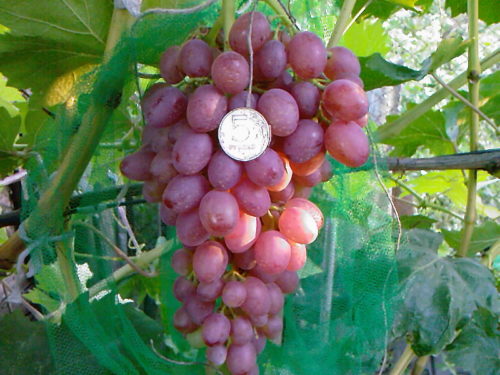
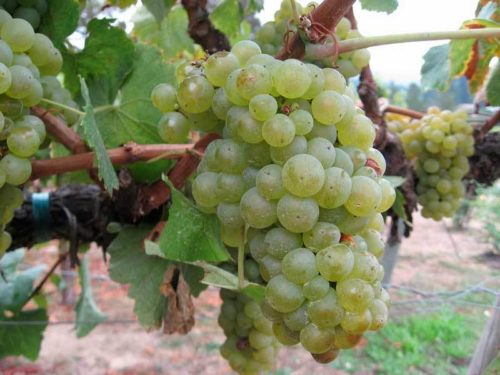
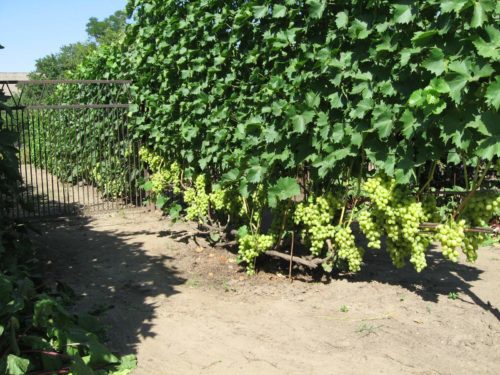

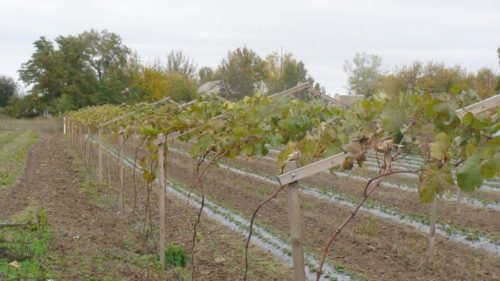

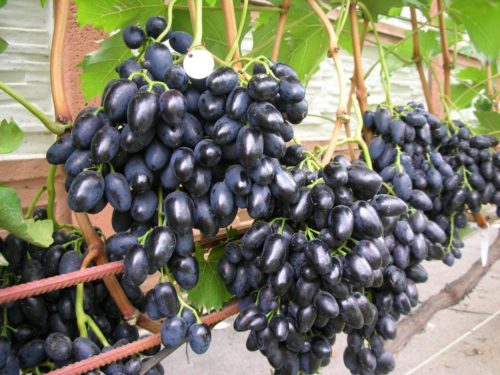












 Start a discussion ...
Start a discussion ...